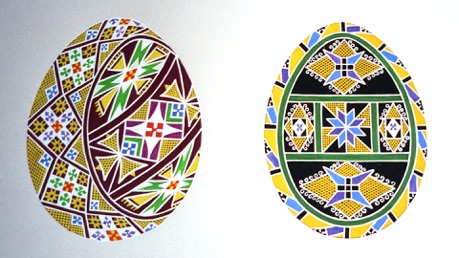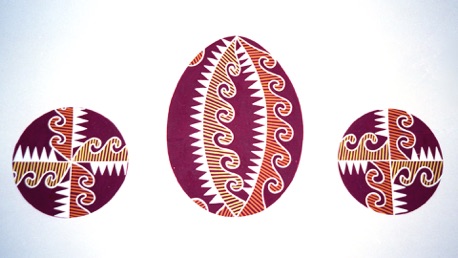Binyashevsky

Erast Binyashevsky had many more watercolors than had been published in his small book. After he died, someone found a small suitcase that had been thrown out by whoever cleared out his flat. It was full of watercolors of pysanky. Luckily, this person realized thе value of his find, and gave the paintings to the ethnographic museum in Kyiv.
Pysankarka Tanya Osadca had a chance to view and photograph some of these when she visited Ukraine in 1998. She was kind enough to lend me her negatives, and I scanned the 35 mm film negatives to create these files. Since 1998, many more of his pysanky have seen print, including some of these, appearing in more recent books.
The pysanky on this page from Binyashevsky’s collection are those that he identifies as being from Northern and Southern Bukovyna. I’ve lumped the two areas together because there are only a small number of pysanky in either group. Northern Bukovyna is part of Chernivtsi oblast; southern Bukovyna is in Romania.
The names of the pysanky are those given to them by Binyashevsky, not necessarily the “folk names” given by pysankary. Many are simple descriptors, and he tends to use “zirky” (stars) rather than “ruzhi” (mallows), despite the latter being the more common folk designation. This is true of other names, too.
(The numbers assigned to the pysanky are based on the photo originals that I obtained, and are for my cataloging purposes only.)
The last pysanka on this page had no identifying information, neither name nor provenance. I am including it on this page because of its similarity to Bukovynian pysanky I have seen before in the pysanky of Ferenchuk. Church motifs are most commonly seen in Hutsul and Bukovynian pysanky, and the bright colors and division are reminiscent of Bukovynian designs.
Binyashevsky: The Lost Pysanky – Bukovyna


Back to Bukovyna Home
Back to Carpathian Pysanky Home
Back to Regional Pysanky Home
Back to Traditional Pysanky HOME
Search my site with Google





